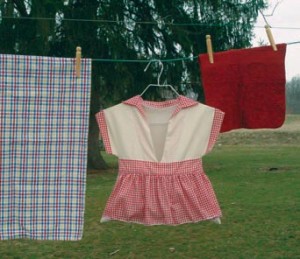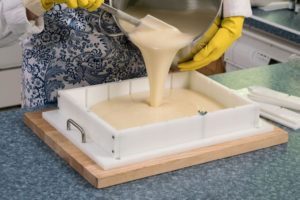There is a little hunter-gatherer in us all. Before humankind settled down and started to make gardens in settlements we were nomadic hunter-gatherers. And June is really the start of the foraging-for-free-food season.
I tend to think that hay fever is the sophisticate’s response to being alienated from this most ancient of activities. One herbalist told me that if you looked out in the countryside you would probably find something to heal whatever ails you within twenty yards of your doorstep.

Since most people go in for lawns these days you probably won’t prove her right if you live in the suburbs or exurbs. But if you can get out into the country in June, the flowering blossom of the elder may just help your hay fever!
Medical herbalists reckon that tea made from the elder flower, sweetened with some local honey, might just ease your hay fever symptoms. Elder is mildly antihistamine, while the pollen in local honey will help acclimatise your immune system so that it won’t be so irritated by pollen.
The blossoms are creamy umbrellas of tiny flowers and the scent is both sweet and slightly astringent. Wine makers prize the flower heads to make elderflower champagne. I use them to make a syrup that can be diluted with sparkling mineral water to make a refreshing soft drink.
The syrup (which includes some lemon juice) is also useful to add to gooseberry jam or jelly. The combination of elderflower with gooseberry is delightful.
June is also the time to start taking inventory of your preserving equipment. You can recycle jars for storing dried herbs like elderflower and meadowsweet for teas. But for making jams, jellies and pickles you really need to consider getting propercanning jars. You also need a really large preserving pan (or stockpot) and a selection of funnels to fit different sizes of jars or bottles.
While it is fashionable to eat ‘seasonally,’ if you don’t want to incur huge food miles it is well worth taking a leaf from our hunter-gatherer ancestors and storing for the winter months when in our cold northern climates there is a dearth of ‘seasonal’ food available. They are the real mentors for teaching us how to live a low impact lifestyle. So we need to make like the squirrels and get foraging and storing!
Editor’s Note: The information in this article is not professional medical advice. Lehman’s makes no claim to the above information. Consult with your physician or another professional healthcare provider before making decisions about natural therapies and/or remedies.



































Bee shared her recipe for the above mentioned elderflower syrup (which she mixes with sparkling mineral water to make “a refreshing soft drink”):
Elderflower Cordial (Syrup)
About 20 elderflower heads put in a stock pot
A lemon, sliced
Pour 1.5 litres of boiling water over flowers and lemon
Cover and let it sit overnight
Next day strain off the liquid. You might need cheese cloth so that the little blossoms don’t fall through the sieve. Then for every litre of liquid add 600 grams of sugar. Bring to a boil, simmer for five minutes.
Bottle it in either large jars or wine bottles that have been sterilised. Keep it in a dark, cool pantry and it should keep for up to two years!